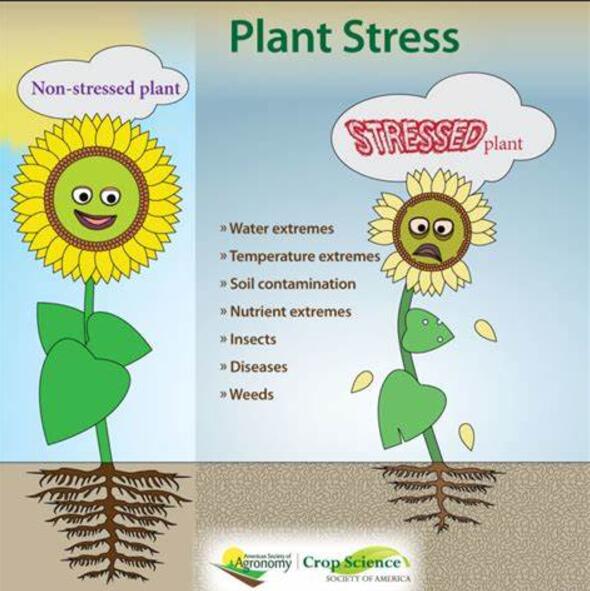Mitigation of nickel toxicity in rice plants by exogenous γ-aminobutyric acid: Enhancement of growth, antioxidant defense, and metal homeostasis
IF 6.8
Q1 PLANT SCIENCES
引用次数: 0
Abstract
In this study, we examined the impacts of exogenously applied γ-aminobutyric acid (GABA) on rice plants under nickel (Ni)-induced stress. Nickel stress significantly reduced growth parameters, disrupted mineral balance, and increased plant stress through elevated H₂O₂, malondialdehyde (MDA), and superoxide anions (O₂⁻), coupled with compromised antioxidant defense mechanisms. However, GABA application effectively alleviated these detrimental effects by enhancing growth parameters, improving relative water content, and reducing oxidative stress. GABA significantly increased antioxidative enzymes activities such as catalase (CAT), superoxide dismutase (SOD), ascorbate peroxidase (APX), and glutathione (GSH). Furthermore, GABA reduced nickel accumulation by upregulating metal transporter proteins (MTPs) OsMTP1 and OsMTP8, promoting nickel sequestration into vacuoles and restoring essential mineral contents, such as Ca²⁺ and Mg²⁺. Gene expression analysis revealed that GABA stimulated the GABA shunt pathway, significantly enhancing the expression of OsGAD, OsGABA-T, and OsSSADH. These findings demonstrate the potential of using GABA to mitigate nickel toxicity by modulating growth, antioxidant defenses, metal homeostasis, and stress-responsive pathways in rice plants.
外源γ-氨基丁酸减轻水稻镍毒性:促进生长、抗氧化防御和金属稳态
本研究研究了外源γ-氨基丁酸(GABA)对镍胁迫下水稻植株的影响。镍胁迫显著降低了生长参数,破坏了矿物质平衡,并通过升高的H₂O₂,丙二醛(MDA)和超氧阴离子(O₂⁻)增加了植物的胁迫,加上抗氧化防御机制受损。然而,GABA通过提高生长参数、提高相对含水量和减少氧化应激,有效地缓解了这些不利影响。GABA显著提高过氧化氢酶(CAT)、超氧化物歧化酶(SOD)、抗坏血酸过氧化物酶(APX)和谷胱甘肽(GSH)等抗氧化酶活性。此外,GABA通过上调金属转运蛋白(MTPs) OsMTP1和OsMTP8来减少镍的积累,促进镍在液泡中的吸附,并恢复Ca 2 +和Mg 2 +等必需矿物质的含量。基因表达分析显示,GABA刺激GABA分流通路,显著增强OsGAD、OsGABA-T和OsSSADH的表达。这些发现证明了GABA通过调节水稻生长、抗氧化防御、金属稳态和应激反应途径来减轻镍毒性的潜力。
本文章由计算机程序翻译,如有差异,请以英文原文为准。
求助全文
约1分钟内获得全文
求助全文
来源期刊

Plant Stress
PLANT SCIENCES-
CiteScore
5.20
自引率
8.00%
发文量
76
审稿时长
63 days
期刊介绍:
The journal Plant Stress deals with plant (or other photoautotrophs, such as algae, cyanobacteria and lichens) responses to abiotic and biotic stress factors that can result in limited growth and productivity. Such responses can be analyzed and described at a physiological, biochemical and molecular level. Experimental approaches/technologies aiming to improve growth and productivity with a potential for downstream validation under stress conditions will also be considered. Both fundamental and applied research manuscripts are welcome, provided that clear mechanistic hypotheses are made and descriptive approaches are avoided. In addition, high-quality review articles will also be considered, provided they follow a critical approach and stimulate thought for future research avenues.
Plant Stress welcomes high-quality manuscripts related (but not limited) to interactions between plants and:
Lack of water (drought) and excess (flooding),
Salinity stress,
Elevated temperature and/or low temperature (chilling and freezing),
Hypoxia and/or anoxia,
Mineral nutrient excess and/or deficiency,
Heavy metals and/or metalloids,
Plant priming (chemical, biological, physiological, nanomaterial, biostimulant) approaches for improved stress protection,
Viral, phytoplasma, bacterial and fungal plant-pathogen interactions.
The journal welcomes basic and applied research articles, as well as review articles and short communications. All submitted manuscripts will be subject to a thorough peer-reviewing process.
 求助内容:
求助内容: 应助结果提醒方式:
应助结果提醒方式:


